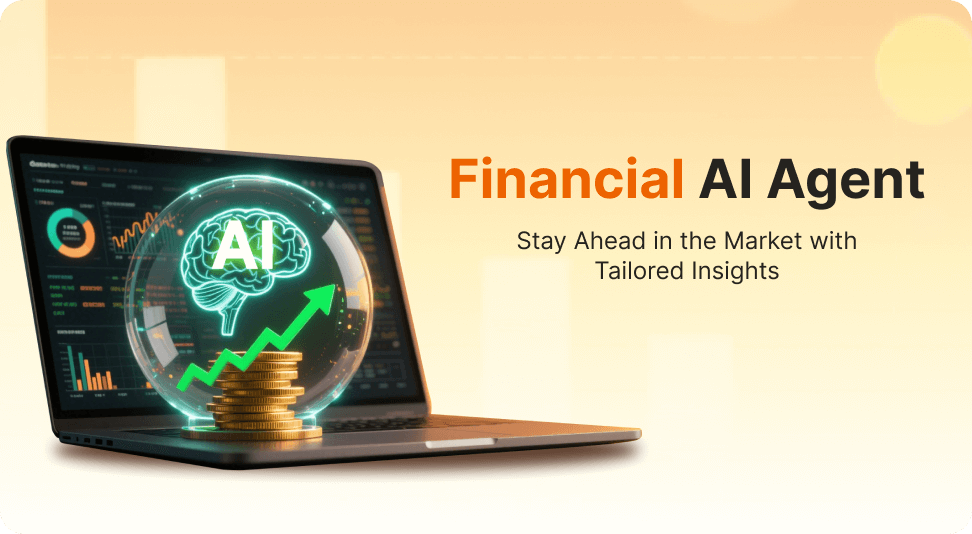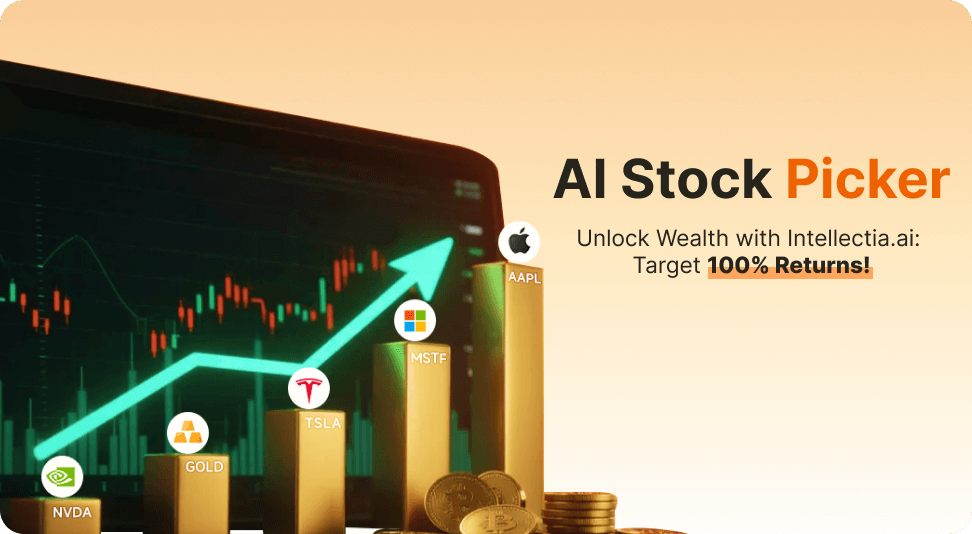Key Takeaways
- There is no one-size-fits-all when it comes to stock analysis software, but there is certainly something for every type of trader.
- Software with powerful technical analysis capabilities includes TradingView, and Thinkorswim. Morningstar, Yahoo Finance, and Seeking Alpha have the advantage of providing valuable insights.
- Intellectia has become the top 1 software recommended for beginners due to its user-friendly interaction and powerful analytical capabilities.
Conducting an in-depth stock analysis is not an easy task, as we need to conduct background checks on a company, from earnings reports to stock price trend analysis. Therefore, we often rely on software to do the heavy lifting for us.
But, selecting the best stock analysis software is a challenge in itself, forcing us to ask "What exactly do I need from my software?" Many investors, including myself, often realize there are hidden features I never knew I needed, until I researched different platforms.
Why you need stock analysis software
Stock analysis software is essential for investors because it provides real-time data, powerful analytical tools, and user-friendly interfaces to make informed trading decisions.

This software can provide investors with the following:
- Technical indicators
- Fundamental analysis
- Historical market data
- AI stock price forecasts
- Comprehensive news & information
- Investment reports
By combining these features, real-time updates, technical and fundamental analysis, price forecasts, and educational resources, stock analysis software empowers investors to identify opportunities, manage risks, and enhance trading strategies efficiently.
Best stock analysis software
- TradingView - Best for Technical Chart Analysis
- Intellectia - Best for Stock Analysis and Forecasts
- ThinkorSwim - Best for Customizable Trading
- Morningstar - Best for Fundamental Research
- Yahoo Finance - Best for Free Stock News and Data
- Seeking Alpha - Best for Investment Analysis Reports
Best analysis software must-haves
Every investor needs a piece of everything, myself included, and so my stock analysis software must include the following.
- Data and information updated in real time.
- Powerful analysis capability (including fundamentals and technical).
- Stock price prediction and recommendation capability.
- User-friendly interface.
- Provides useful educational resources.
- Reasonably priced.
Best for technical chart analysis
1. TradingView
Recommended Rating: ⭐️⭐️⭐️⭐️⭐️
Cost: $12.95 - $499.95/month, or $155.40 - $5,999.40 / year
Free trial: Yes, 30 days
Key features:
- Hundreds of technical analysis tools
- Rich historical and real-time data
- Screener with auto refresh
Tradingview is a multi-functional platform that provides traders with real-time market data, advanced charts, and many stock analysis tools. If you enjoy doing in-depth technical analysis on stocks, then I highly recommend you try TradingView.
TradingView offers over 400 popular indicators and access to over 110 drawing tools, all of which are helpful for traders, only if you know how to use them. The majority of TradingView's tools are free to use and easily accessible.

Many brokerage platforms usually rely on TradingView's platform for their own, so using this stock analysis software will be unavoidable.
With TradingView, you can view the data of stocks, crypto, and ETFs from 150+ exchanges in 50+ countries. You can also use TradingView's screeners to screen stocks and other asset categories from different regions and identify investment opportunities.
Pros and Cons:
| Pros | Cons |
|---|---|
| Powerful technical analysis | Lack of in-depth fundamental analysis |
| Provide long-term historical data | Premium plans can be expensive |
| Suitable for experienced investors | Cannot offer stock forecasts or potential entry points |
Best for stock analysis and forecasts
2. Intellectia
Recommended Rating: ⭐️⭐️⭐️⭐️⭐️
Cost: $14.95 - $89.95/month, or $143.52 -$863 /year
Free trial: Yes, $1/7 days
Key features:
- Expert-level stock analysis tool powered by generative financial AI
- Daily stock and crypto recommendations based on events, technical indicators, and trading charts
- Stock & crypto price forecast and prediction powered by AI
- Wide coverage of 10,000+ stocks and 100+ cryptocurrencies
Most of the stock analysis software today offers traditional methodologies to help investors conduct technical or fundamental stock analysis, which is often very complicated and time-consuming.
Intellectia's platform offers investors access to both technical and fundamental stock analysis with an intuitive and interactive AI agent designed to answer any financial-related analysis questions.
As an example, we have recently seen a surge in growth in the semiconductor industry. We can simply ask Intellectia's AI agent, "Should I buy Nividia today?" and the AI will run a complex algorithmic analysis and provide actionable suggestions.
For traders who don't have the knowledge to figure out how to identify stock signals via tradingview, Intellectia.AI certainly is a much easy tool for you.
Pros and cons:
| Pros | Cons |
|---|---|
| Analyst-level stock & crypto analysis | Lack of educational resources |
| AI analysis based on real-time accurate data updates with no illusion | Strong coverage of US stocks, ETFs, and cryptos, but lack of coverage in other financial markets |
| Stock & crypto screening and selection made easy | |
| Accurate stock & crypto price prediction capability powered by AI |
Best for customizable trading
3.ThinkorSwim
Recommended Rating: ⭐️⭐️⭐️⭐️
Cost: Free to use
Key features:
Provides many technical analysis tools
Real-time data updates
Use thinkScript to build personal Indicator
Thinkorswim is a stock analysis software owned by TD Ameritrade, and its been assisting investors for more than 20 years now.
Similar to TradingView, Thinkorswim is also a powerful stock analysis platform, which means that most of the analysis functions that TradingView has are also available in Thinkorswim. For example, it has hundreds of built-in technical indicators and chart visualizations and provides you with stock quotes, market data, and news.
The difference between the two is that Thinkorswim is free to use. Although its technical analysis function is not as powerful as TradingView, it offers more than enough features for beginner traders.
Thinkorswim also provides a lot of learning resources to teach you how to analyze stocks and use the platform, which is great for beginners.
However, I have found the platform's quotes to come through delayed compared to the speed of the market, making it a less desirable stock analysis software for my personal use.
Pros and Cons:
| Pros | Cons |
|---|---|
| Provide technical analysis functions | Lack of in-depth fundamental analysis |
| Free to use | Cannot offer stock forecasts or potential entry points |
| Allows for customized analysis tools |
Best for fundamental research
4. Morningstar
Recommended Rating: ⭐️⭐️⭐️
Cost: $34.95/month, or $249 / year
Free trial: Yes, 7 days
Key features:
- Provide research reports on stocks, funds, ETFs, etc.
- Widely recognized rating system
Morningstar is well-known for its comprehensive investment research and ratings on stocks, mutual funds, and ETFs. If you are someone who focuses on company fundamentals and risk research, I suggest you take a look at Morningstar's ratings before deciding which stocks or funds to buy.
Morningstar provides detailed reports on individual stocks, including insights into the company's financial status, valuation, competitive position, and growth prospects.
Based on that, Morningstar rates stocks from 1 to 5 stars. Among them, 5 stars means the stock is undervalued and has high return potential.
In addition, Morningstar has an Economic Moat Rating, which I think is worth referring to. If a company is considered by Morningstar to have a wide moat, it means that it has a strong and difficult-to-challenge competitive advantage.
However, Morningstar currently only offers basic rating functions to free users. If you want more in-depth analysis reports or ratings, you need to subscribe to Morningstar's membership service.
Pros and cons:
| Pros | Cons |
|---|---|
| Provide comprehensive and in-depth analysis | Premium content requires payment |
| Rating systems can help you pick stocks | Lack of technical analysis features |
| Suitable for professional analysts | Not friendly to beginners |
| Cannot offer stock forecasts or potential entry points |
Best for free stock news and data
5. Yahoo Finance
Recommended Rating: ⭐️⭐️⭐️
Cost: $0 - $39.95/month, or $0 - $479.40/year
Free trial: Yes, start with a free account
Key features:
- Provides comprehensive and free news
- Various charts and tools for stock analysis
- Track analysts' rating actions
Yahoo Finance is a famous platform that provides tons of financial information, including real-time news, analyst ratings, earnings reports, etc. All this information can help you understand the fundamentals of each stock.
Yahoo Finance also provides technical analysis tools such as stock screeners, stock comparisons, economic calendars, advanced charts, and currency conversion to help you analyze stocks. You can also customize a stock watchlist on Yahoo Finance and set custom alerts.
However, I am not overly fond of using Yahoo Finance as it's quite restrictive in what you can do with the platform. It is primarily used for stock and financial news, and for that it is perfect, but for monitoring and tracking stocks in real-time, it doesn't compare to tools such as TradingView or ThinkorSwim.
Pros and cons:
| Pros | Cons |
|---|---|
| Comprehensive historical and real-time stock data | It takes a lot of time to browse information |
| User-friendly interface | Lack of in-depth stock analysis |
| View a wealth of information for free | Cannot offer stock forecasts or potential entry points |
Best for investment analysis reports
6. Seeking Alpha
Recommended Rating: ⭐️⭐️⭐️
Cost: $0 - $99/month, or $0 - $2,400 /year
Free trial: Yes, start with a free account
Key features:
- Provides high-quality stock analysis or insight articles
- Real-time news and information updates
- Rates stocks that do not have a Wall Street rating
Seeking Alpha has more than 20 million monthly visitors and produces more than 10,000 research reports per month. This shows that the platform is widely used and trusted for investment research and analysis.
Seeking Alpha also gives ratings on stocks that Wall Street ignores. These stocks can't compare with big-cap stocks, but still have a chance to bring potential returns if bought at the right price range.
Similar to Yahoo Finance, Seeking Alpha also provides a lot of financial market information, including economic news, earnings reports, etc. All this information is updated in real-time.
Although Seeking Alpha provides a wealth of information, it only shows a small part to free users. If you want to get more valuable information, you need to become a paid user of Seeking Alpha.
You also need to note that the technical analysis tools provided by Seeking Alpha are very limited, with only simple stock/ETF filters, rankings, and monitoring functions.
So if you want to analyze a stock comprehensively, it is recommended to use it in combination with other powerful technical analysis software, such as Intellectia or TradingView.
Pros and cons:
| Pros | Cons |
|---|---|
| Provides high-quality investment articles | Lack of technical analysis features |
| Provides a large amount of stock information | Subscription costs are too high |
| Real-time data updates | Cannot offer stock forecasts or potential entry points |
Conclusion
Based on the above, you can see there are numerous stock analysis software to choose from, and each can offer specific features according to your needs.
I personally lean toward technical trading and often use TradingView for my day-to-day trades, although when analyzing stocks Intellectia's AI takes a prime position. Use one, or numerous in unison, regardless, these stock tools will enhance your trading game.











